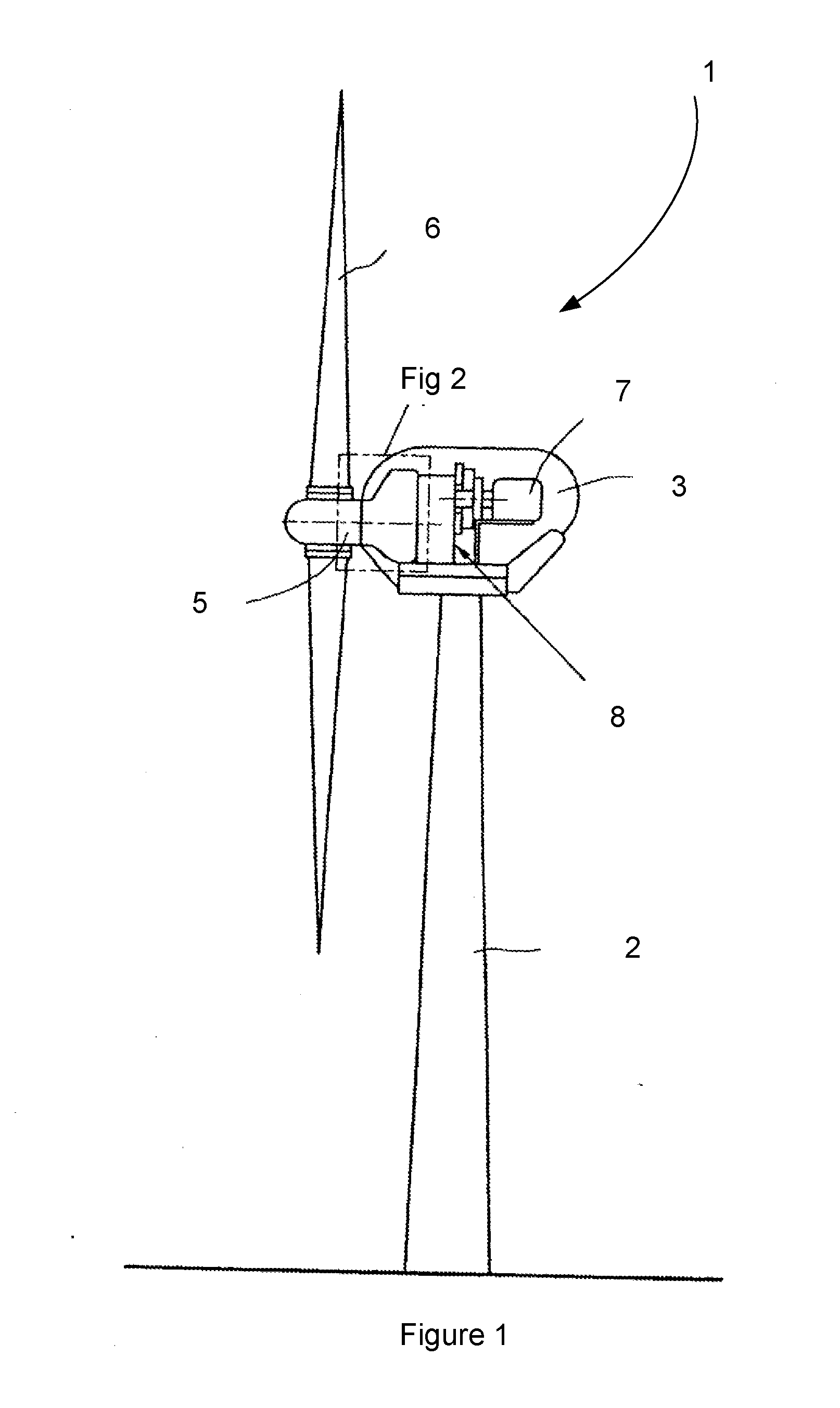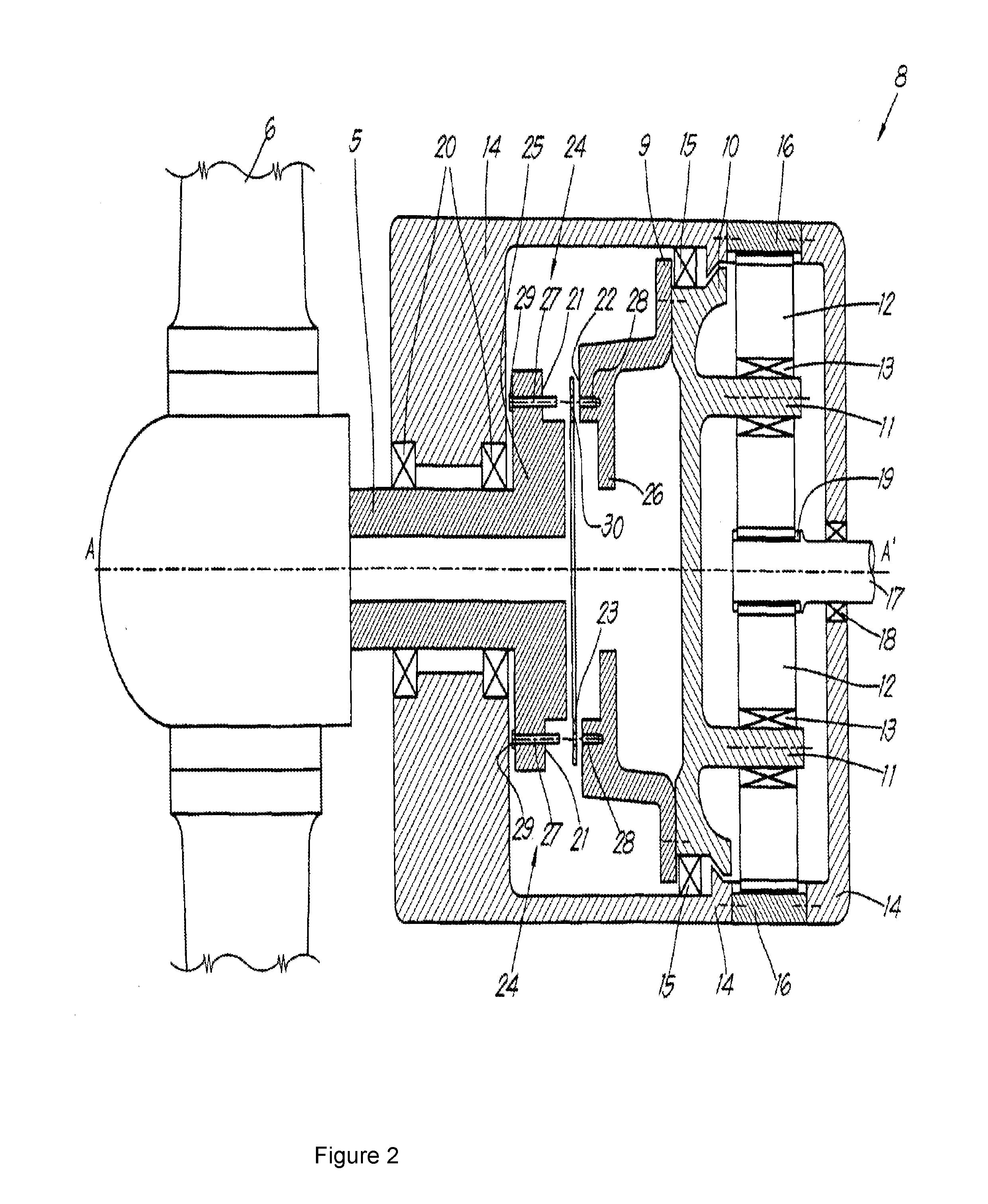Friction coupling
- Summary
- Abstract
- Description
- Claims
- Application Information
AI Technical Summary
Benefits of technology
Problems solved by technology
Method used
Image
Examples
example
[0070]A commercially available friction coupling of the kind described with reference to FIGS. 1 and 2 was examined. The friction surface of the friction disk 23 consisted of diamond particles in a Nickel bond later. The asperity density and mean asperity height of the friction surface were measured by scanning a region of the friction surface using a laser scanning microscope. The measured asperity density was 313 asperities per mm2 and the measured mean asperity height was 21.7 μm. The measured standard deviation was 9 μm.
[0071]The material of the counterface was cast iron. The coefficient of friction between the friction surface and the counterface was measured using a conventional test method as described in ASTM D1894. A value of 0.75 was measured. The frictional force measured during the test is representative of the total friction, which consists of abrasive friction and adhesive friction. The abrasive friction is due to the hard asperities which plough through the counterfac...
PUM
 Login to View More
Login to View More Abstract
Description
Claims
Application Information
 Login to View More
Login to View More - R&D
- Intellectual Property
- Life Sciences
- Materials
- Tech Scout
- Unparalleled Data Quality
- Higher Quality Content
- 60% Fewer Hallucinations
Browse by: Latest US Patents, China's latest patents, Technical Efficacy Thesaurus, Application Domain, Technology Topic, Popular Technical Reports.
© 2025 PatSnap. All rights reserved.Legal|Privacy policy|Modern Slavery Act Transparency Statement|Sitemap|About US| Contact US: help@patsnap.com



